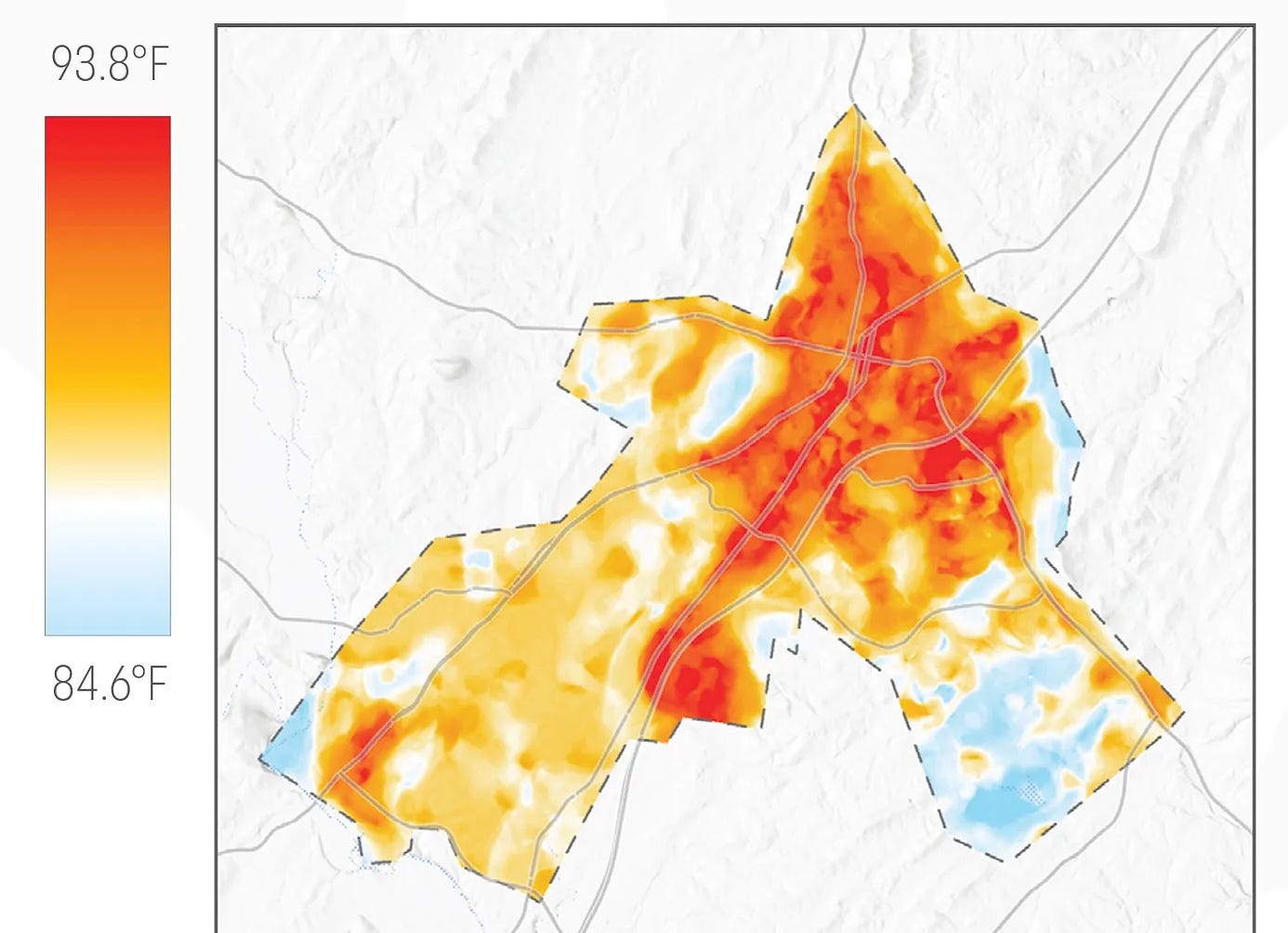What can we do about heat islands in Harrisonburg?
We can do better than sprawling expanses of asphalt.
We’re fortunate that Harrisonburg has been spared some of the most extreme impacts of climate breakdown this summer: heat, flooding, and drought. Our neighbors in the northern part of the Valley have not been so lucky: Strasburg declared a drought emergency as a result of low levels in the North Fork of the Shenandoah River, and Winchester issued a drought watch. Meanwhile, hospitals in the southwestern US are treating patients for burns during what has become known as “pavement burn season.”
This week the Department of Homeland Security released new guidelines intended to help communities draft local “extreme temperature response” plans. Among the DHS recommendations for municipalities are mapping heat islands and working to eliminate those hotspots by expanding urban forests and green space.
In 2021 Bridgewater College student Trevor Brooks and biology professor Tim Kreps conducted a heat assessment of Harrisonburg as part of a statewide research project called Heat Watch. They found that the hottest parts of Harrisonburg are where we have the most surface area covered in parking lots and stroads. Brooks explains, “Man-made materials like asphalt and concrete trap and absorb heat more than green spaces, leading to this effect where urban cities have a high concentration of heat and your rural areas don’t.”

According to the 2021 Urban Forest Management Master Plan, Harrisonburg has a “relatively high impervious surface percentage” (33.6 %) and a lower-than-average tree canopy cover (26%). It’s no surprise that there are so many heat islands in the city. For decades Harrisonburg’s zoning ordinance has fueled the overbuilding of parking lots by requiring a certain number of off-street parking lots per housing unit, or per square footage of retail space. If you doubt whether parking in the city is overbuilt, consider that the parking lot at the Valley Mall is so empty a circus was able to set up there. When was the last time any of the parking lots on the east side of town were full? It certainly wasn’t on Black Friday.
Take a look at this satellite image of the area around the intersection of University Blvd. and East Market with the parking lots are highlighted in red. The space devoted to temporary car storage dwarfs the actual buildings they’re associated with. All of those asphalt fields are soaking in heat and radiating heat.

What can we do about it? We can start by repealing the local parking mandates. Off-street parking minimums prioritize cars over green space, make housing more expensive, and exacerbate the effects of heat and stormwater runoff. Earlier this year, Richmond became the second Virginia city to repeal parking mandates. The first was Roanoke, which has also implemented parking maximums. Harrisonburg should join Roanoke and a growing number of cities across the US that have taken this important first step.
The EPA recommends green roofs and cool roofs as two strategies to help reduce heat islands. We can go further by adding trees and green space anywhere we can fit it. Trees tend not to thrive in small carve-outs in large, hot parking lots, but “tiny forests” (Miyawaki forests) can be planted in very small plots of land adjacent to parking lots.
It’s probable that summers in the Valley will continue to get hotter, and we’re currently not very well prepared for that. The good news is that there are plenty of places where we can remove asphalt and add trees, and we can use federal funding to help pay for it.





Brent, this is good stuff, I might actually use it one of my classes. Harrisonburg isn't the type of city I would have immediately thought of with a heat island problem. Although getting rid of parking lots is a dicey proposition in a city with abysmal public transportation. :/
Excellent ideas!